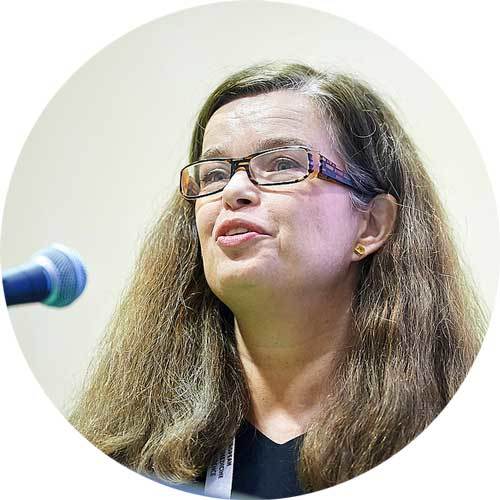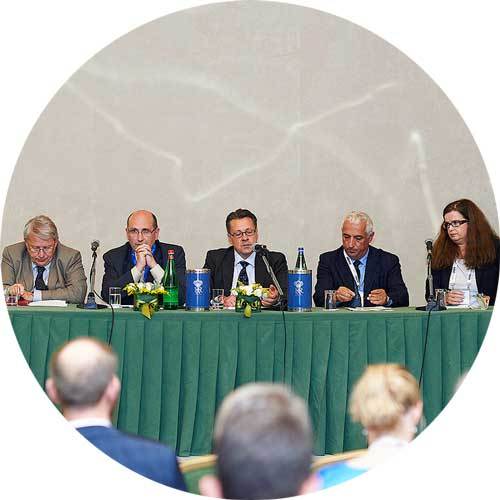| Interviews |
Mobile Solutions in Disease Management
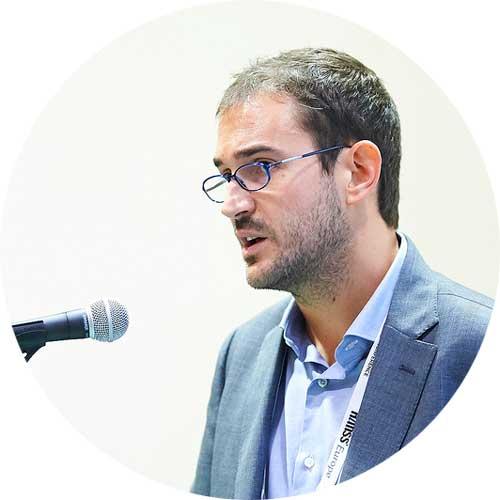
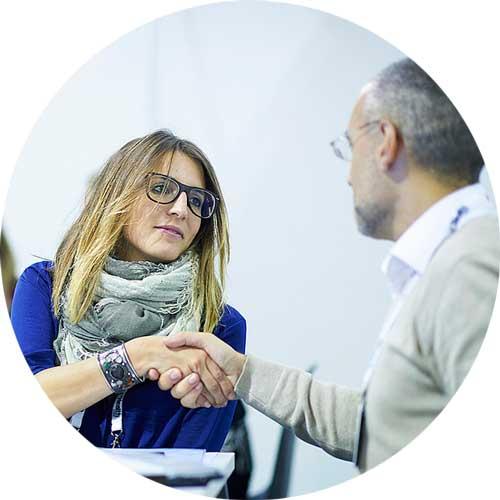

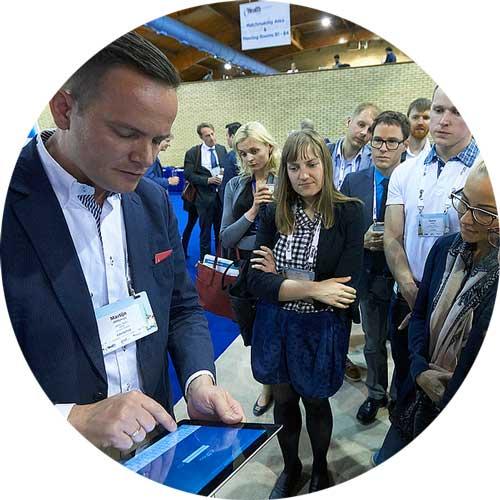
Jordi Piera Jimenez is dually trained in Computing Science Engineering by the Autonomous University of Barcelona (UAB) and in Enterprise Management and Direction also by the UAB. He also holds a MSc in Telemedicine and E-health delivered by the Open University of Catalonia.
He started working at Badalona Serveis Assistencials (BSA) in year 2003, first as an analyst and software developer inside the ICT Department where he actively participated in the deployment and implementation of the Electronic Medical Record and in the integration between the health and the social care services.
After that, he moved into the innovation and research field participating in a number of national and international projects. His experience in EU funded projects dates back from year 2009 when he participated in the AAL JP funded Aladdin project. After that project he has taken part in many other projects with different roles inside different Consortiums under other funding programmes (including FP6, FP7, DG SANCO Health Programme and lately in H2020) with projects such as Home Sweet Home, ReAAL, BeyondSilos, Mastermind, Momentum, Insup-C, ACT, Do Change and Usercare.
Nowadays he is the Chief Information Officer and the Chief of R&D&I at BSA.
Interview with Jordi Piera Jimenez*, CIO, CINO, Badalona Serveis Assistencials SA, Spain
Wednesday 15 of July 2015 - Telemedicine has the power to deliver disease management solutions that prevent hospitalisations ‒ and potentially save healthcare billions. Such technologies include mobile monitoring devices, which collect data on anything from blood sugar and breathing levels to body weight and physical activity, enabling medical professionals to monitor a patient remotely and offer timely interventions, at the same time encouraging the patient to engage directly with the care provider/s through telemedicine. During this session the European Telemedicine Conference’s partners will share their experiences in this area and this will lead into a roundtable discussion on the 21st of October 2015 in Odense, Denmark.
How do mobile solutions and telemedicine support the improvement of disease management?
Jordi Piera Jimenez: I think that there are mainly three areas where mobile and telemedicine solutions are fostering the improvement of disease management:
- Prognostic area: By providing new resources for a faster diagnose and early risk detection, supported by the management and the exploitation of the knowledge and from the evidence-based medicine (EBM).
- Diagnostic area: By providing new resources to increase the efficiency and quality through the support of the EBM. Visual and analytic integration of multidisciplinary information that is helping to get a better view of the global context and the environment of the patient.
- Cure area: By promoting continuous monitoring, ubiquity (overcoming the barriers of time and space), and procedures to optimize the cure process developing non-invasive methods and also less aggressive pharmacological therapies. Allowing the patients to be at their social environment while being treated, helping in the rehabilitation processes and maintaining the patients controlled when they are in chronic conditions. Further to that, empowering the patients to take care of their own disease by mentoring them and consequently changing their behaviour towards healthy habits.
What is the evidence that mobile solutions help individuals to manage disease more effectively?
Jordi Piera Jimenez: Plenty of research has been done that shows that such solutions may help individuals to manage their disease more effectively. A simple search on the databases indexed by the National Centre for Biotechnology Information (NCBI) using different combinations of the words “telemedicine”, “mobile solutions” and “effectiveness” yields to thousands of results. Further to that, a lot of research has been also done to show the efficiency of such solutions compared to traditional care even this point tends to be weak and generates a lot of doubts to the purchasing authorities. Thus, it seems that this hasn’t been enough to show the decision makers that this should be the way to go because the adoption of telemedicine in healthcare systems has been slow.
From my point of view, the research should be improved by not only analysing the clinical effectiveness and the efficiency to the system but also adding all the other important perspectives which would be interesting for all the stakeholders involved within the provision of care such as: the patient perspectives, the legal aspects, the security and safety issues and the socio-cultural and ethical aspects. Improving the quality of the evidence through developing robust evaluation frameworks, assessment methodologies and quality approvals should be the way to help decision makers taking appropriate choices.
How are consumer applications impacting the uptake of clinical mobile solutions for disease management?
Jordi Piera Jimenez: We have a good situation, where the market is moving faster than the regulations, which is a good thing to foster the uptake of clinical mobile solutions. However, I have some concerns that need to be solved such as the patient safety and security where some applications analysed have shown weaknesses and even to be harmful when following their recommendations.
Health-related consumer applications have flooded the mobile market in such a way during the last three years that we are still processing it. A 2012 estimate says that there are no fewer than 40,000 of those, which are meaning more than 100 million downloads and billions of dollars in revenues. So far, there’s not an evaluation framework or certification process that has been validated to check that all those new services have gone through a standardized validation process, which still makes the health and social care systems, the care professionals and the consumers doubtful about the quality of many of those services. Even that, some attempts to formalize the way mobile applications are being recommended have been put in place mainly by public institutions trying to regulate a market some are calling the Wild West. There’s still a lot of research to do but I think we are advancing in the appropriate direction.
What is the single biggest challenge in the adoption of telemedicine/mobile solutions in disease management and what is needed to overcome it?
Jordi Piera Jimenez: From my point of view, the main challenge to overcome in the adoption of telemedicine/mobile solutions is to streamline the deployment of them as routine practice with reimbursement as the primary obstacle for implementation. In a previous question it has been explained that plenty of research has been done which has shown that such solutions help to manage the disease more effectively while saving costs to the healthcare system but almost everywhere in Europe those solutions are just pilots that tend to disappear when the funding, either public or private, is gone. Even 84% of healthcare executives are claiming that telemedicine is or should be an important part of their business, they are less confident about its immediate adoption. Most of them claim the telemedicine services already deployed are either not paid or receiving lower rates than for in-person care.
I think that the main driver to overcome such a problem is political leadership and strong commitment towards a real scaling up of telemedicine/mobile solutions. Decision makers and financing stakeholders should start purchasing those services because the health and social care systems, as they are currently built, won’t be able to handle the huge demand of services they will face in the coming years due to the ageing population. Big advantage should be taken from empowered patients and from the health assets available within the community (including NGOs and the third sector) with the support of those ICT tools/models.
What, in your opinion, have been the most important achievements of telemedicine in the last year?
Jordi Piera Jimenez: For me, a specific achievement I would like to highlight from the last year would be the changes the so-called “Affordable Care Act” (ACA) is making in the US market. The ACA is penalising the hospitals for an excess of readmissions, which is making the healthcare executives to be more focused on keeping the patients healthy. Such a situation is leading to find cost-effective methods of engagement with patients and telemedicine looks to be the way to go in order to streamline operations. This is good news for all of us working in the sector, because this is changing the paradigm at the US with 9 out of 10 service providers pursuing telemedicine programs with more than 75 million visits during last year and with an expectation of a growth curve which will be more likely to be exponential than linear.
What will you be presenting at the upcoming European Telemedicine Conference (October 21-22, Odense, Denmark) and why do you think HIMSS events represent an important platform for eHealth?
Jordi Piera Jimenez: Badalona Serveis Assistencials will be presenting its last experiences with telemedicine/mobile solutions from the last years in order to exchange experiences with the attendees of what’s been done regionally and also with different international consortiums. For us, participating in the HIMSS events represents a great opportunity to meet all the important stakeholders within the eHealth environment, exchange experiences, share opportunities and find possible collaborations. All of those, surrounded by a teaching program with state of the art knowledge about the hot topics at the moment and packaged in a magnificent organisation and amazing venues that never disappoint the attendee. Further to that, this year the 2015 European Telemedicine Conference will be partnering with the WHINN - Week of Health and Innovation, with a lot of side events surrounding it, which will bring everyone that matters in the eHealth environment to Denmark and will provide even from better opportunities than in the past.
Telemedicine in European Practice
Interview with Line Helen Linstad, Head of Department Prevention and Self-management, Norwegian Center for Integrated Care and Telemedicine, Norway and new board members to the HIMSS Europe Governing Council
Fifteen regions all over Europe have introduced telemedicine solutions to treat patients with chronic conditions. Since 2012 they have aligned their treatment of patients with diabetes, chronic lung disease and heart disease in the framework of the United4Health project (supported by the European Union).
Based on your own experience in the field of eHealth at the Norwegian Center for Integrated Care and Telemedicine (NST), could you please share lessons from telemedicine deployment in real practice.
How have telemedicine solutions been procured in the open market?
Telemedicine in Norway is still part of pilots/large pilots and are not yet integrated on a large scale in our health system. So the market does not function yet. The care providers are not asking for telemedicine solutions on a large scale yet.
How has technology been integrated in existing healthcare systems?
Telemedicine is not yet integrated fully. Introducing telemedicine in the healthcare system may affect the power distribution between professionals/organizations and the patients in the system. It may also change the reimbursement system. This represents very tough and difficult change management processes.
How have care professionals and patients used these solutions and how these solutions have evolved?
When asked, the patients are very positive towards the use of telemedicine. Professionals need documentation which shows that it works. But even when documentation shows that tm is useful for the communication between the patient and the professional this does not lead to change. This is an area we have to dig deeper into and understand in the future.
What will you be presenting at the upcoming European Telemedicine Conference (October 21-22, Odense, Denmark) and why do you think HIMSS events represent an important platform for eHealth?
I will focus on how mHealth and tm has great potential when used in different settings. I think we need HIMSS as an organizer of platforms for communication in the European eHealth family.
